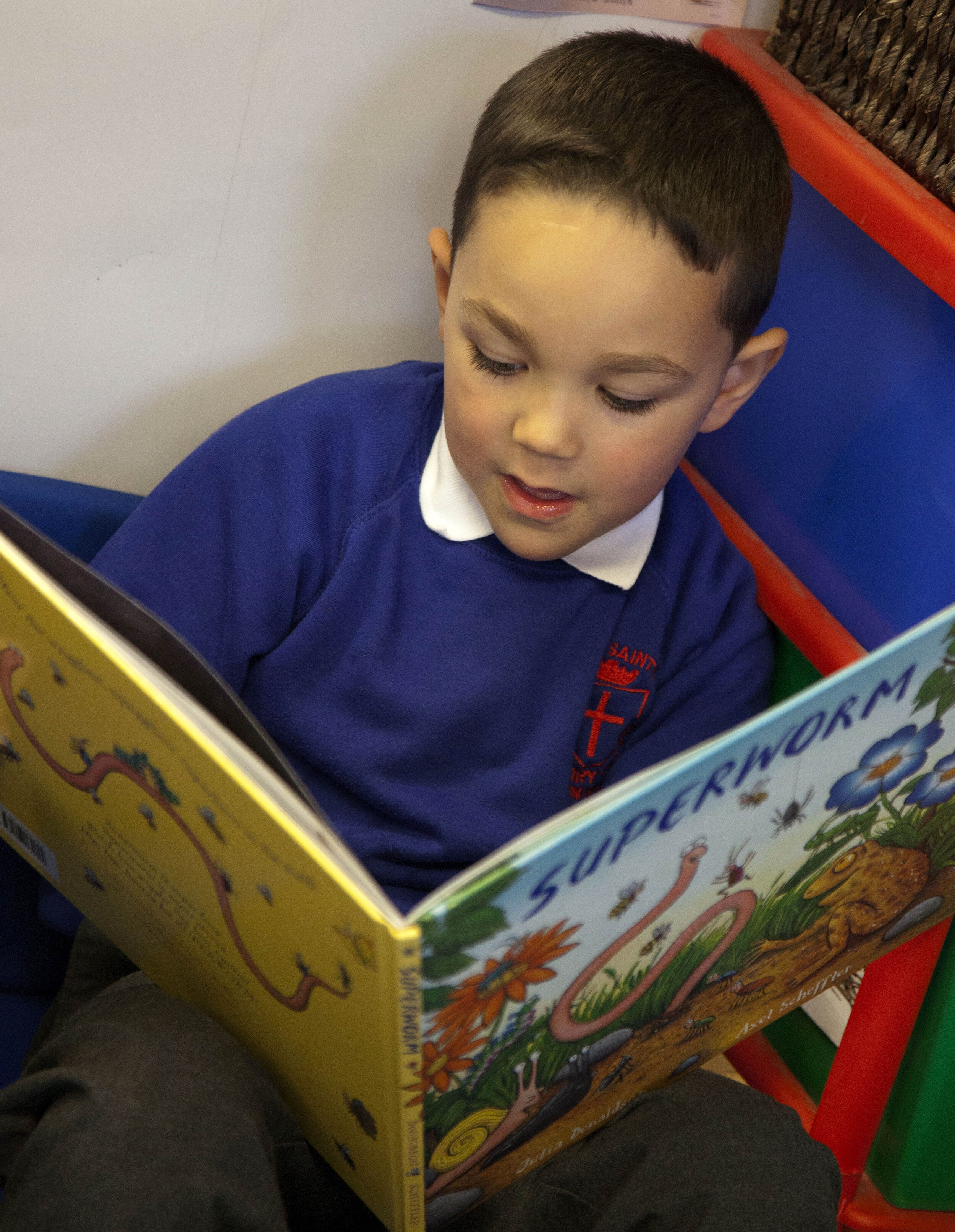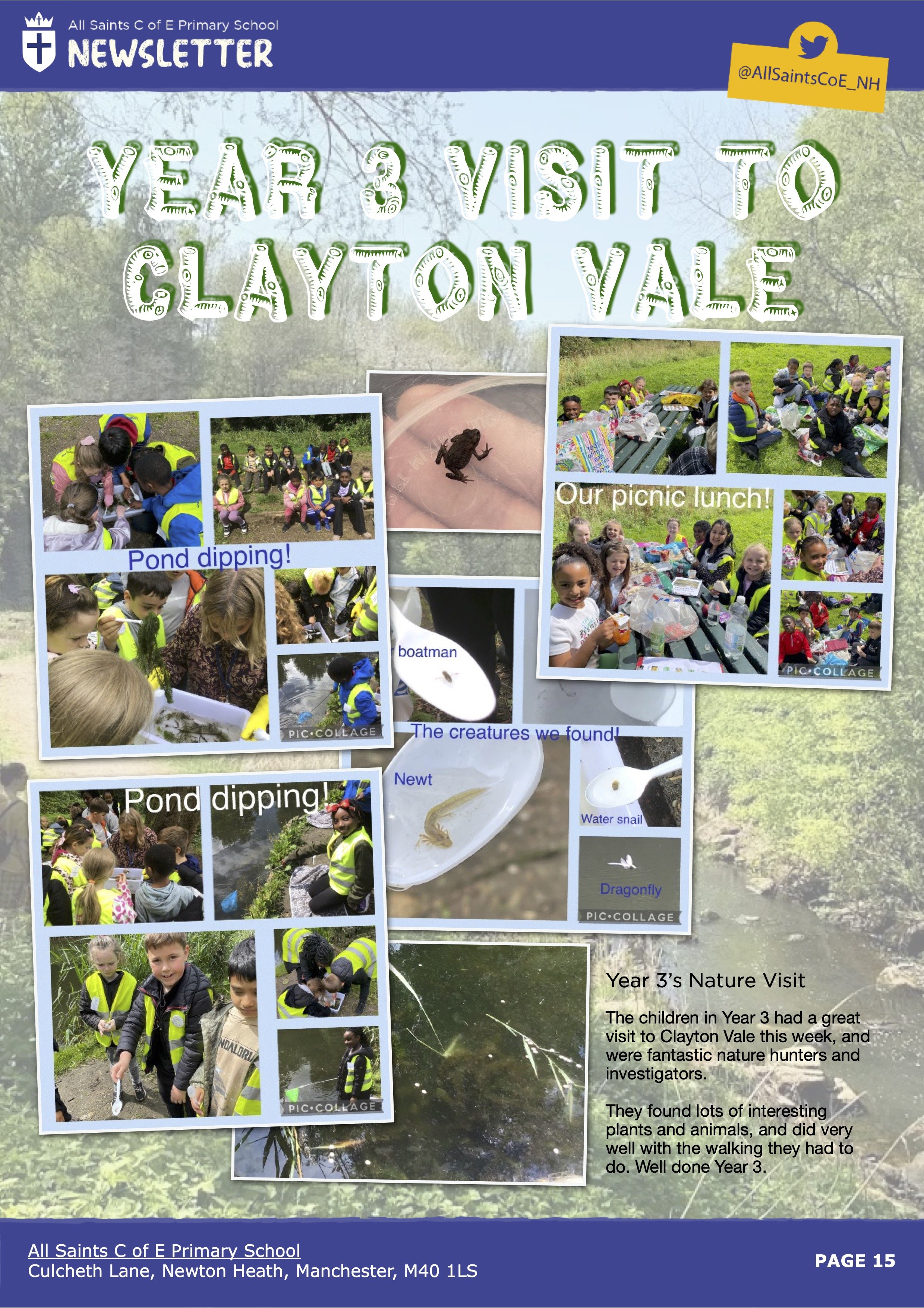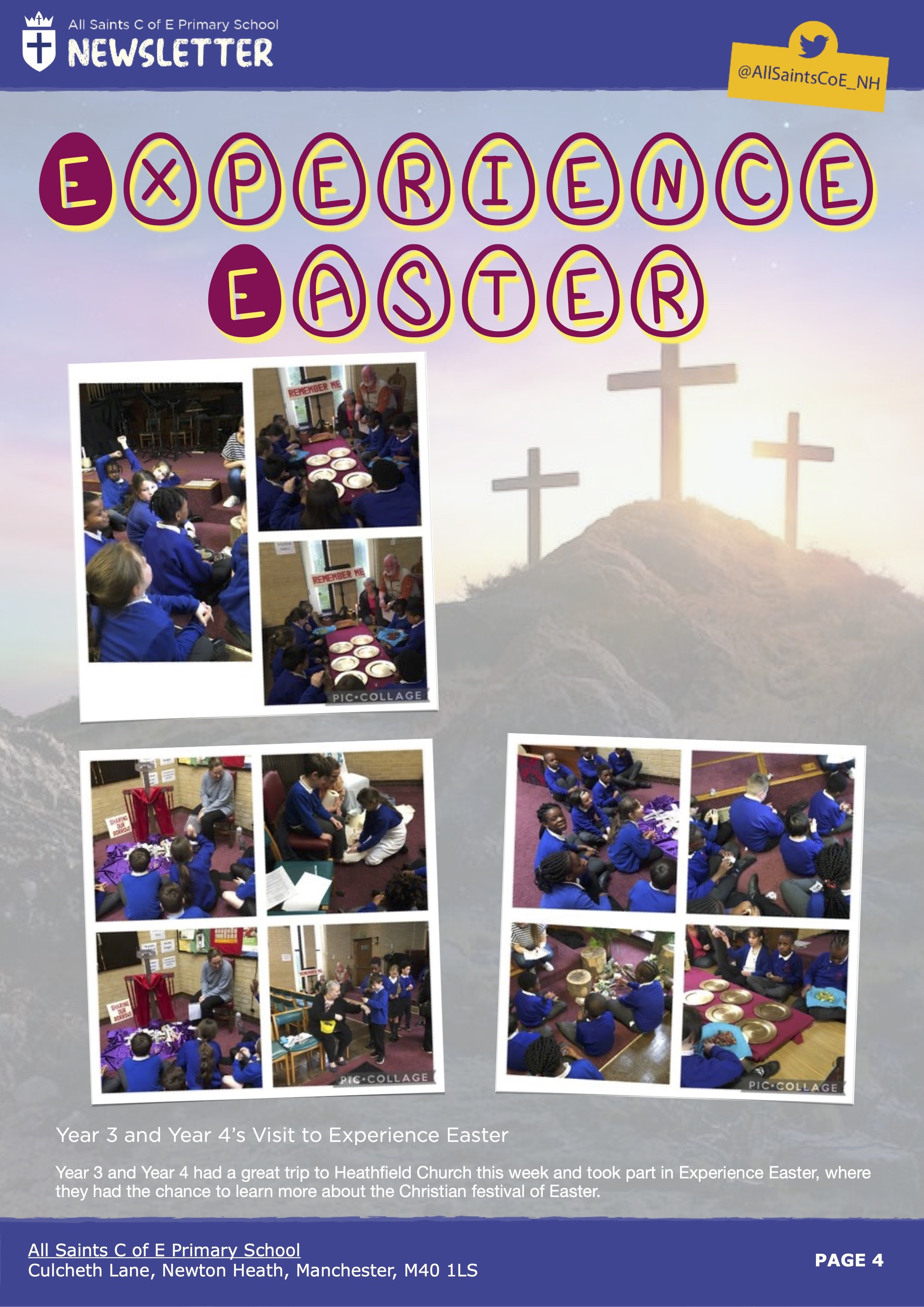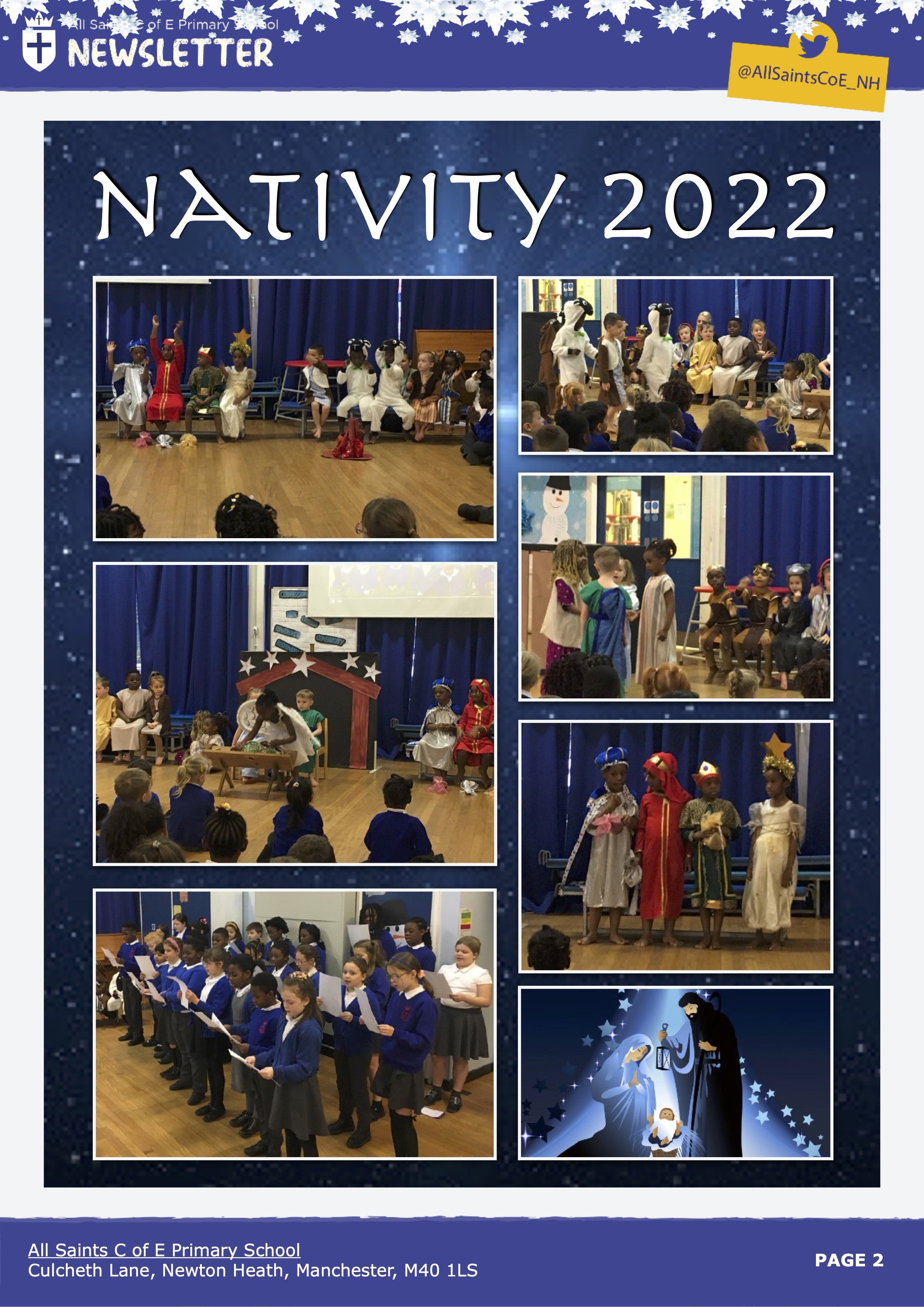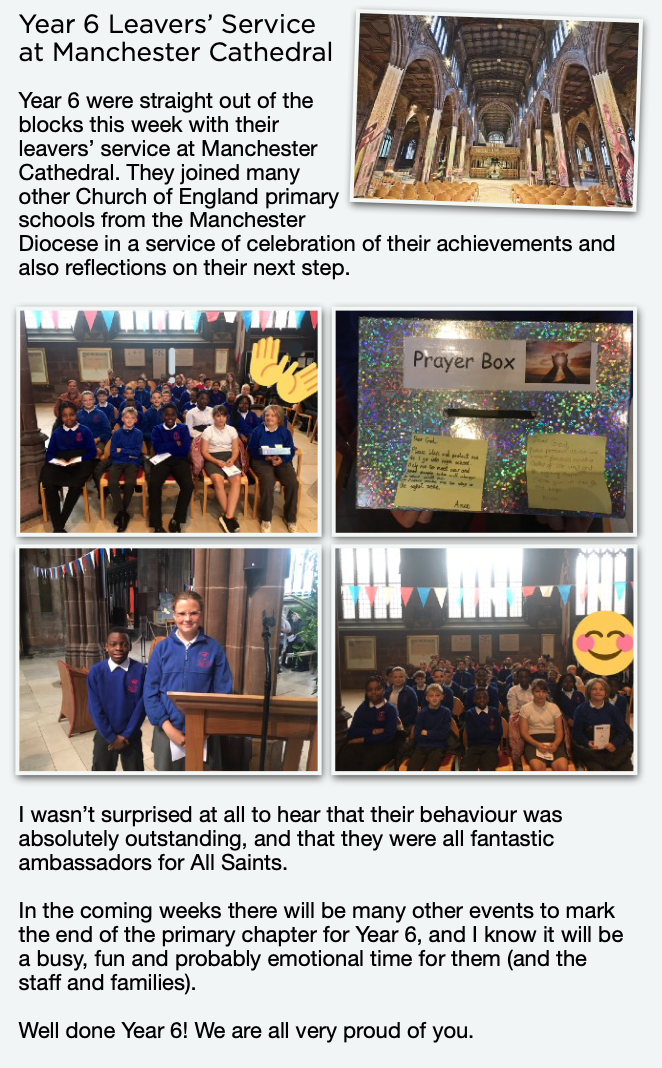Our Vision and Aims
Our vision, theologically rooted in Christian teachings and values, has been agreed by the staff and governors of our school, and is one in which we believe demonstrates what we want for our children, and how the school’s membership of the Christian family can help us achieve it.
Our vision respects our school’s extremely long history of serving the families of Newton Heath, and specifically the Trust Deed of 1821 (see below). In addition, we believe it is also relevant to Newton Heath in the 21st century, encompassing universal values and aims that are shared by everyone, whatever their religion or personal beliefs. A continuation of principled service from a small chapel on a rural heath in the 17th century, to a busy multi-cultural urban parish in the 21st century.
Why Healthy, Happy and Confident?
We believe that this vision is one in which our children would be best prepared for the challenges that they will face in the future, will make them contributing members of a world society and help them lead fulfilling and happy lives. These aims are particularly important for the children in our area, many of whom already face more challenges than others.
“Dear Lord,
Bless our school All Saints.
By working together, and playing together,
we can serve you, and serve one another.
Amen”
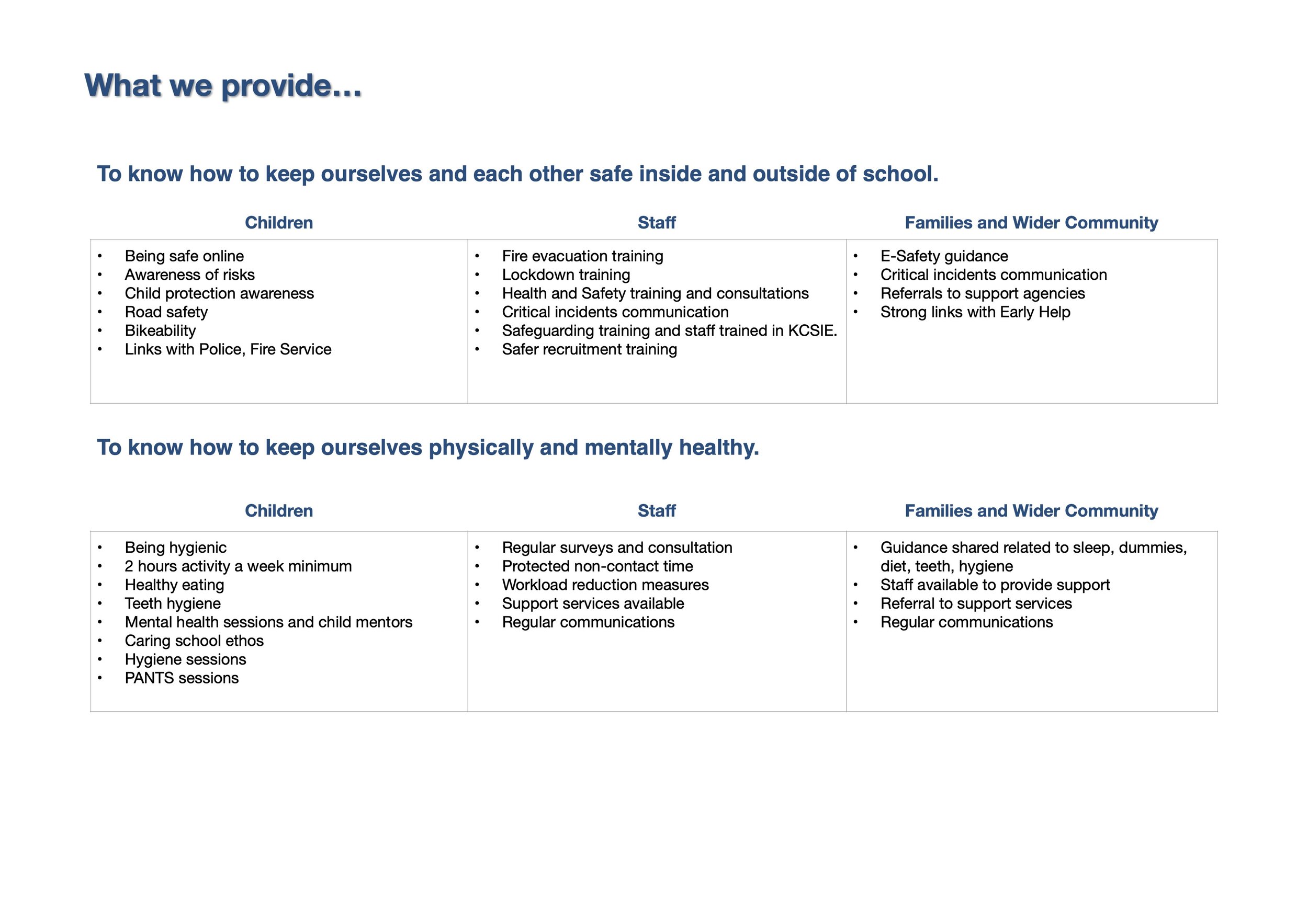





Our Trust Deed written in 1821, updated in 1826 and then again in 1854 (when the previous school building was built).
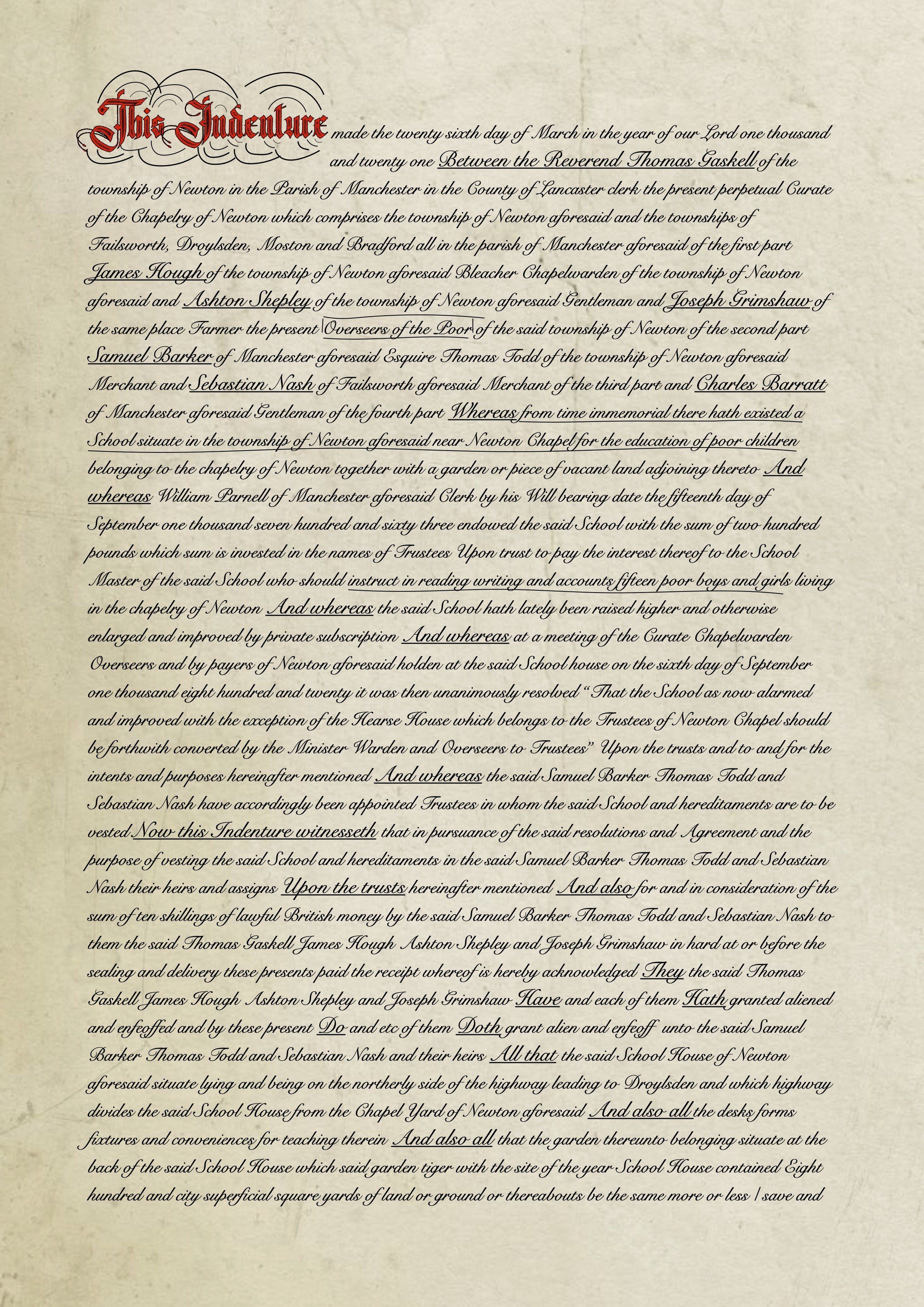




Given the age and complexity of the Trust Deed, here are the main points:
The church and the local overseers for the poor used an endowment from William Parnell’s will to set up a new school (a school linked to the chapel had been in place for a long time and funded by other endowments in the past) for 15 boys and girls, with the aim of educating the poor of the local area.
Trustees were appointed from the local area and a system agreed for the appointment of future trustees.
15 boys and girls were to be instructed in Religious Studies, reading, writing and accounts.
The school house had recently been upgraded by using local private subscriptions. This was situated across what is now All Saints Street, opposite our church (which had recently been reconstructed and is the building we use today).
The School House Garden could be used by the Headmaster or Headmistress to grow produce for themselves, but they couldn’t use the garden to build new structures etc.
The Trustees had to appoint the Headmaster or Headmistress who had to be members of the Church of England. They were also responsible for paying them and removing them if there was any inappropriate behaviour.
The day school would be open to the children every day with the exception of Sunday. There was already a Sunday School in place, and the building had to continue to allow this continue on the school premises.
The rent charged for the house and garden had to be used for the repair and maintenance of the school.
Trustees were permitted to withhold money given to them for their own expenses.
In 1853, the Trust Deed was updated to reflect the school joining the National Society for Promoting the Education of the Poor in the Principles of the Established Church throughout England and Wales, in that the National Society provided £75 for the construction of the new school (built 1854). This marked the first real shift from local funding to national funding for our school, initially through the National Society and then to the government as the Voluntary Aided school we are today. This was also the first mention of us being known as All Saints School, as opposed to Newton Day School as it had been known up to that time.
What is clear within the Trust Deed is the following:
The school was for the poor of the local area who didn’t receive any education.
Children (boys and girls) were to be educated in Religious Studies, Reading, Writing and Mathematics.
The school would be open every day for local children.
Money left by wealthier local parishioners was to fund the Head Teacher. The Church would provide the land, rooms, fixtures and furniture.
The school was to be run along the principles of the established Church of England.
The school would become part of a larger network of Church of England schools through the National Society.
What does this mean for us today?
The Trust Deed remains the legal basis for the school and still applies, albeit with different legal frameworks, funding and responsibilities. We are still a school for the local community, providing for the specific needs of all children who we care for. We remain part of the family of Church of England schools, and aim to live by and promote Christian values (shared with other beliefs) using teachings from Christian stories. We are still committed to providing our children with the fundamental skills they will need in the future.
We believe our vision of…
Through the Christian values of perseverance, respect and love we can all be Healthy, Happy and Confident.
…respects our Trust Deed and reflects the constants inherited from the past, whilst addressing the needs of our entire community today.


